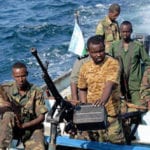 Our World
Our World  Our World
Our World  Movies and TV
Movies and TV The 10 Coolest Stars to Set Sail on The Love Boat
 History
History 10 Things You Didn’t Know About the American National Anthem
 Technology
Technology Top 10 Everyday Tech Buzzwords That Hide a Darker Past
 Humans
Humans 10 Everyday Human Behaviors That Are Actually Survival Instincts
 Animals
Animals 10 Animals That Humiliated and Harmed Historical Leaders
 History
History 10 Most Influential Protests in Modern History
 Creepy
Creepy 10 More Representations of Death from Myth, Legend, and Folktale
 Technology
Technology 10 Scientific Breakthroughs of 2025 That’ll Change Everything
 Our World
Our World 10 Ways Icelandic Culture Makes Other Countries Look Boring
 Our World
Our World 10 Ways Your Christmas Tree Is More Lit Than You Think
 Movies and TV
Movies and TV The 10 Coolest Stars to Set Sail on The Love Boat
 History
History 10 Things You Didn’t Know About the American National Anthem
Who's Behind Listverse?

Jamie Frater
Head Editor
Jamie founded Listverse due to an insatiable desire to share fascinating, obscure, and bizarre facts. He has been a guest speaker on numerous national radio and television stations and is a five time published author.
More About Us Technology
Technology Top 10 Everyday Tech Buzzwords That Hide a Darker Past
 Humans
Humans 10 Everyday Human Behaviors That Are Actually Survival Instincts
 Animals
Animals 10 Animals That Humiliated and Harmed Historical Leaders
 History
History 10 Most Influential Protests in Modern History
 Creepy
Creepy 10 More Representations of Death from Myth, Legend, and Folktale
 Technology
Technology 10 Scientific Breakthroughs of 2025 That’ll Change Everything
 Our World
Our World 10 Ways Icelandic Culture Makes Other Countries Look Boring
10 Pirates of the North Sea
Pirates are usually associated with the Caribbean Sea. Men like Henry Morgan and William Kidd left behind a legacy of adventure and great battles; but piracy is something that’s been going on for as long as men have traveled the seas. And it happened (and still does) all over the globe. The pirates of the North Sea were not much different from the ones we are used to hearing about. They mostly lived by a set of codes, they were just as brutal, and they had little to no respect for the government. The Scandinavian countries Norway and Denmark became a union at the end of the 1300’s, and a wave of lawlessness arose from the wars between this new union and the monarchs of the neighboring nations, among them: England, Germany and Sweden. These pirates remain almost forgotten in history, despite their fascinating lives. Here are some of their tales.
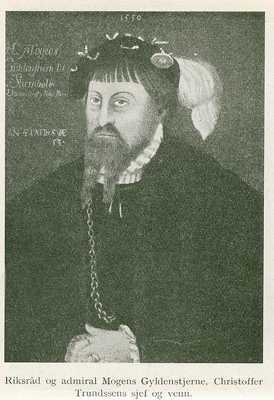
In 1523, Christian II, King of Denmark, Norway and Sweden, lost his throne to Fredrik I. At that time, the most feared pirates were those who stood by Christian II to help him gain back his throne. Their job was to raid the sea and abduct as many ships as they possibly could, so that the former king could use these riches to stand against Fredrik I. It took him eight years, but it finally worked. However, the pirates who had been his allies now became outlaws fighting against him.
His solution was Kristoffer Trondsson and Otto Stigsson. They were both given the position as pirate hunters, and led their men into battle against the pirates. Even though they were widely feared, they were not successful in their job. Only one single ship was recorded to have been taken back by the pirate hunters. In the end, they both became bored with finding nothing, and became pirates themselves! They mostly abducted trade ships from Holland and Scotland on their way to Norway. Later on, Trondsson was actually hired as an admiral, in Norway.
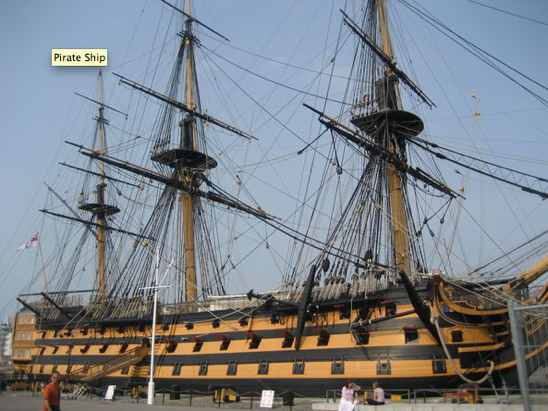
In the fall of 1445, a German sailor named Steffen Smit and his crew, were caught in bad weather, and had no other option but to steer towards the port of Jæren, in Rogaland, Norway. They waited for weeks, without the weather giving any sign of calming down. But one day, they had some unexpected visitors. Erlend Eindridesson was one of the most respected men in Norway, and with him he had two ships and sixty men. He was known for his dislike of Germans.
The Norwegian pirates threatened to steal their cargo. Smit, on the other hand, knew it would look bad for Eindridesson’s reputation if he stole from a German ship. The two countries were at peace at the time, and he had papers to prove his rights as a trader. Eindridesson let them be, but Smit knew it wasn’t over.
At night, while no one noticed, Eindridesson and his men cut the ropes attaching the ship to the docks, and the ship was crushed toward it by the waves. At once, they insisted on helping the Germans, saving the cargo and bringing it to shore. Smit never saw the cargo again.

Martin Pechlin was one of the most notorious pirates in the 1500’s. He was brutal and without mercy, and it is said that he once hijacked twelve ships in one day! But, in 1526, he met his match. Three ships coming from Germany were caught in a storm and ended up somewhere by the Norwegian coastline. There they docked in a fjord, hoping to trade with the farmers living nearby. But because of the heavy mist, neither they, nor the pirates, could see each other as they docked on each their side of the fjord.
The next day, the Germans were visited by two young boys coming to trade with them. They were spies, sent by the pirates to find out more about the crew they were about to attack. Captain Thode saw through their lies, and prevented them from delivering the information. Nothing happened before the next morning, when Pechlin and his pirate crew opened fire.
The sailors proved to be good fighters, and Pechlin’s ship was, in the end, caught between the enemies, and the Germans ended it with a bullet to his head. Only fourteen pirates managed to escape, six were taken alive, and the remaining sixty men of Pechlin’s former crew had been killed in battle.
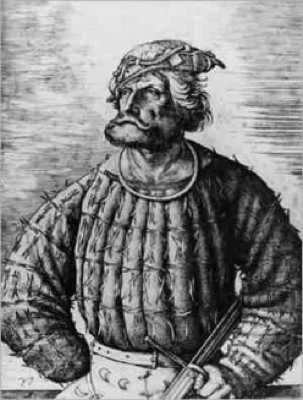
In the 13 and 1400’s, the sea was ruled by “Fataljebrødrene”; a band of pirates coming from all of the Northern countries. These pirates lived by a strict code, and they were known as “Likedelere”, which means “Those who share equally”. Over the years they had many leaders, or pirate kings. Klaus Størtebecker was one of them. He is maybe one of the most legendary pirates of Northern Europe. It is said he sailed a ship with a mast of gold, and that he once buried an enormous treasure somewhere in Germany, which has yet to be found. To people of that time, he was like a Robin Hood at sea; stealing from the rich traders, and being generous to the poor. Also he was a fearless warrior in battle. In the end he was hanged in a gold rope long enough to reach around the city of Hamburg, and his dying wish was for the executioners to grant pardon to all those of his men he could walk past – after his execution! It is said five men were pardoned.
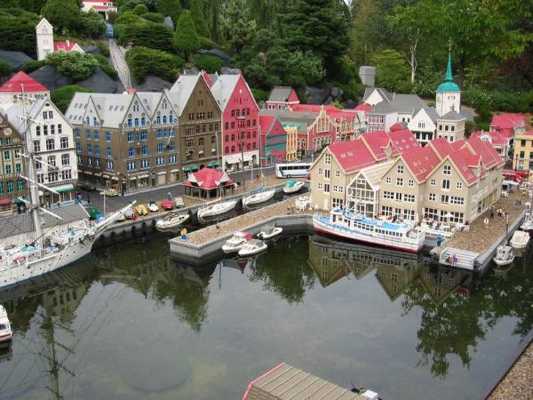
Voet was the next leader of “Fataljebrødrene”, after Størtebecker. He was his equal in fighting skills, but this guy didn’t show any mercy as to whether people were poor or rich. At one point, he went to the Norwegian city of Bergen, and, after robbing it of everything worth taking, he burnt the whole city down. The citizens fought back, but even though they outnumbered the pirates, they were defeated. Voet escaped from Bergen with all of the stolen goods he could carry with him.
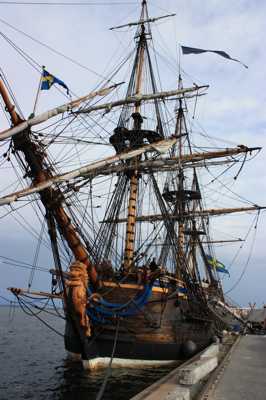
In 1808, a Swedish pirate ship by the name “Rinaldini”, set sail to the North Sea to abduct one last Danish-Norwegian trade ship before winter. At the same time, the Norwegian ships “Fortuna”, and “Elisabeth Maria Tønder”, both trade ships, too started their journey; and apparently faith wanted them all to meet in open sea. The Swedish pirates quickly took command of the “Fortuna”, before turning on the “Elisabeth Maria Tønder”. It all went smoothly, without much resistance, and the pirates started on their way back to Sweden with the new ships and their crew. The problem was: their safe docking place was far ahead, and it would take a long time to get back. They were caught in a storm, and it seemed almost impossible to get back, and even more so when they saw the Norwegian coastline in the distance.
The captain turned to the Norwegian captains of the “Fortuna” and the “Elisabeth”, ordering them to tell him where they were. But they told him they didn’t know. At that time, the Norwegians decided to take action, before the Swedish chose to turn toward England, instead (which they were about to). Illness, the cold, and a huge portion of bad luck, meant the Swedish pirates could do almost nothing, when the Norwegian captain Liung stepped forward, and ordered them to set sail toward the nearest dock. The pirates neither said nor did anything to stop him.
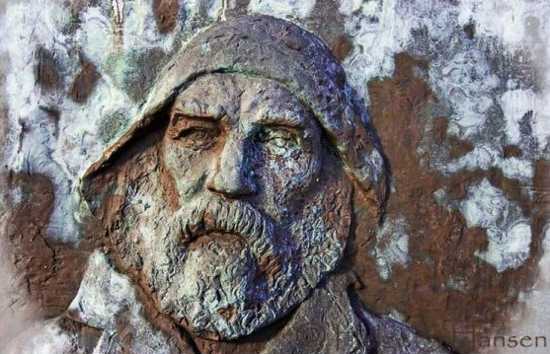
In 1808, the Norwegian pirate captain, Tønnes Kaade Samuelsen, and his crew set sail for the sea, to do what pirates do best. But it was in the middle of the winter, and no tradeships dared sail the North Sea at this time of year. So, Samuelsen got bored, and decided to do something about it. He and his men set sail for England, disguised themselves as fishermen coming home, and once in the dock, cut the ropes of the biggest ship they could find, and just sailed it back to Norway. He continued with this tactic for most of his career; before his ship sunk in a storm, and took him and the entire crew with it.
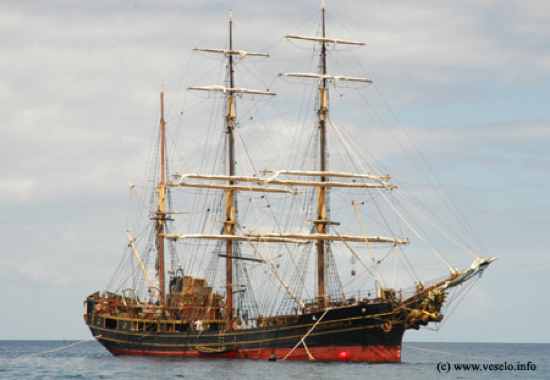
If there was one thing a pirate roaming around in the North Sea would want to avoid at all costs, it was being arrested outside the coastline of England. If that was to happen, they would be imprisoned for years. Captain Røscher, an old Danish-Norwegian pirate, almost met this fate. It happened in 1810; Captain Røscher and the crew of his ship “Tak for sidst” were in a poor state due to the fatal weather of the season. But despite this setback they managed to take the command of an English ship, led by Captain William Dimond. The crew of the ship claimed to be Americans, but Røscher knew better. He split the captured crew so that they could be organized in two smaller groups on each of the ships, and left his first mate in command of his old ship.
Then, the Englishmen decided to act. Aboard the “Tak for Sidst”, the first mate, Erik Fries, who was a highly skilled pirate, personally took care of the riot, and proceeded sailing towards Norway. Røscher, on the other hand, was not as lucky. The pirates were locked up, and Captain Dimond set sail back to Scotland, where the pirates would be taken directly to England. Røscher was furious and plotted revenge with his crew whenever he had the chance. And finally he found the solution. One of the crew members of the English ship was a young Swedish man, who in the end was talked into helping them. He let them out just when Captain Dimond and his crew were inside eating, and the pirates just locked them inside the ship and regained control. The Englishmen made no further attempts to escape, and soon Captain Røscer could see the coastline of Norway, just days after “Tak for Sidst” had found its way home.
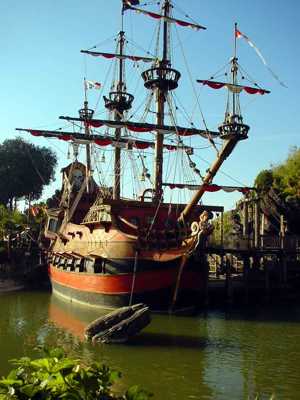
Knut Ellingsen was a highly skilled Norwegian pirate, and the captain of the ship “Den Veivisende Paquet”(Paquet the Pathfinder). The same day the event happened, the year of 1810, he had already hijacked a ship, and he and the crew were on their lookout for more, when a much bigger English ship came in sight. It soon became clear Ellingsen had been caught in the act, with a clearly stolen ship. The Englishmen told them to surrender peacefully, and it seemed they had no other choice. Now, whether it was a direct order from Ellingsen, or just a miscalculation by the man behind the wheel, is uncertain; but just when the Englishmen thought they had them, and were about to jump aboard, the Norwegians set full sail, and escaped by just sailing away. The Englishmen were shocked by the rude maneuver, which resulted in a brutal chase after the pirates. The pirate ship was much faster, but the English were better armed, and soon it was hailing bullets over the pirate ship. Ellingsen shouted at his crew to get out of the way, as the master sail came falling down at them, tip first.
Standing up was impossible, because of the bullets, so Ellingsen did something that would later earn him the Order of Dannebrog. He lay down on his back, avoiding the bullets, and steered the ship using his feet! Because of his skills as a sailor, and even with the master sail down, he managed to lose the Englishmen, and steer the ship into a safe fjord, saving himself and his crew.
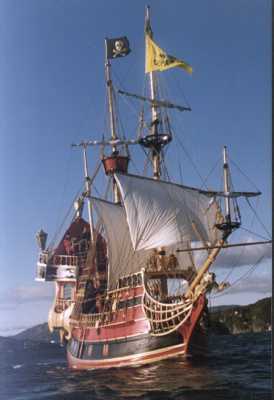
Jan Mendoza was a Spanish pirate, whose career in the North Sea was making the Danish-Norwegian king Christian IV frustrated, because of all the economical damages he inflicted. So, to make an end to it, he sent two pirate hunters after him; Admiral Jørgen Daa, and the Norwegian explorer and adventurer Jens Munk. They chased Mendoza from England to the coast of northern Russia, and back, with the two battleships “Victor”, and “Jupiter”. They finally caught up with him, but Captain Daa became too eager in his hunt, and hoisted too many sails to catch up with Mendoza, so the entire ship almost ended up side down. But Jens Munk chased Mendoza into a small fjord, where all three ships anchored to repair the damages. Captain Mendoza’s ship was taking in water, and for such a heavy ship, there was no way they could just set sail. They had no other choice but to fight.
Captain Daa on the other hand, wanted to solve matters peacefully, and suggested a meeting where they would discuss surrender. But Mendoza rejected his invitation, unless Captain Daa was willing to offer Jens Munk as insurance. Munk didn’t mind, but the same second he set foot on Mendoza’s ship, he was bound and treated like a prisoner. Of course, Mendoza never kept his promise to Captain Daa, but remained on the ship. Jens Munk stayed the night, because he knew Captain Daa would signal him with a cannon shot when they came to help him. But because he had seen their every defense, he wanted to find a better strategy than what they had already planned. So he threatened Mendoza, with such calm firmness, that the Spanish pirate sat him free. Munk and Captain Daa attacked the pirates shortly after, coming from three sides: the “Victor, “Jupiter”, and from the beach. After a long fight, where one third of Mendoza’s crew were killed, and all three ships were almost blown to pieces, Captain Mendoza finally admitted defeat. The remaining crew were executed by drowning, and Captain Mendoza and his first mate were sent to Copenhagen to be hanged. Captain Daa and Jens Munk found in Mendoza’s ship, riches worthy of a great pirate: ten chests of gold, all so heavy it took ten men to carry just one of them.
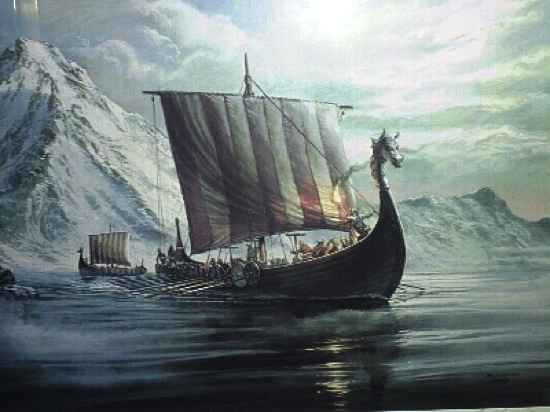
Although the Vikings were not known for battles in open waters, they did attack from the seas, often targeting islands. They were the terror of the sea in their time, and many of them probably ventured into piracy every now and then, in addition to pillaging churches and villages.
